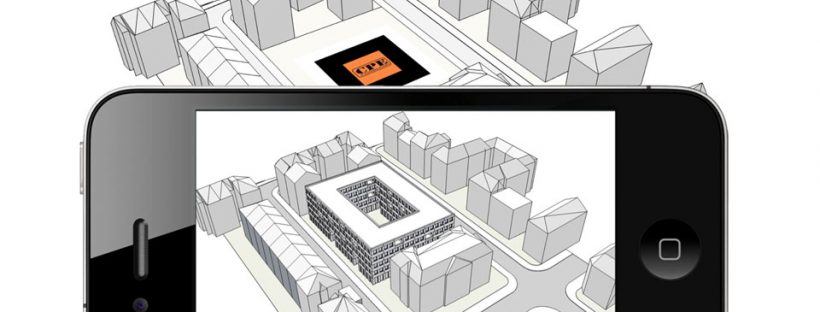[ Zusammenfassung ]
„Visualisierung und Kommunikation gehören zu den täglichen Aufgaben von Planern und Architekten. Die dabei zur Unterstützung einsetzbaren Techniken erfahren eine fortlaufen- de Entwicklung, woraus sich immerzu neue Anwendungsfälle ergeben. Insbesondere um die Möglichkeit der eigenen Meinungsbildung des sogenannten interessierten Laien zu verbessern, gilt es solche interaktive Techniken auszuwählen, die vielseitig einsetzbar sind und mithilfe derer sich der Laie auf spielerische Weise für durchaus ernste Themen der städtebaulichen Planung informieren kann. Das vorliegende Paper befasst sich insbesondere mit den Möglichkeiten von Augmented Reality- (kurz: AR-) Darstellungen auf mobilen Endgeräten in den Themenfeldern von Architektur und Stadtplanung. Gängige AR- Techniken werden vorgestellt, ihre spezifische n Eigenschaften betrachtet und dementsprechende Anwendungsfälle abgeleitet und aufgezeigt. Des Weiteren wird auf die Bedeutung dieser Form der Plankommunikation aus sozial er Sicht sowie sich daraus ergebender Entwicklungen für die Stadtplanung insgesamt diskutiert.“ [Broschart & Zeile 2014 ]
[ Abstract ]
“The term “augmented reality” (AR) might sound like science fiction at first, reminding one of Hollywood movies such as “Terminator” or “Iron Man”. Augmented reality means the overlay of a real existing situation with virtual content. Starting with simple text information, pictures, audio- and video-files to 3D-models, there is a whole range of realizable content to augment reality. For every AR-visualization there are four elements needed: a render-unit, a tracking-unit, a camera and a monitor. A few years ago, there were only stationary AR-visualizations or users had to carry heavy equipment to explore the virtual environment. Nevertheless, with the rapid development of new techniques and tools, augmented reality visualizations can now even be realized with smartphones and tablets. Concerning the fast development of these techniques, it is necessary to stay tuned to these development processes and think about new applications for planning communication. The man-made environment affects every human who lives within it. When changes are made within this environment, citizens have to be able to form their own opinion about these changes. However, the key problem is that not every person involved has a planning or architectural background, so the spatial perception of each person is to be valued in a different way. Based on these requirements, communication of planning processes needs various and adaptable tools in order to offer an understandable information transfer. While the use of two-dimensional plans and renderings in planning communication is state-of-the-art, the paper’s focus lies on interactive tools and gives a general overview on common augmented reality techniques and their specific characteristics. Depending on these characteristics, one must think about possible scenarios in the fields of architecture and urban planning.” [Broschart & Zeile 2015]
